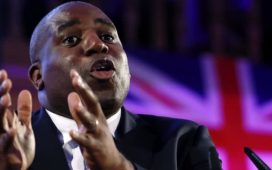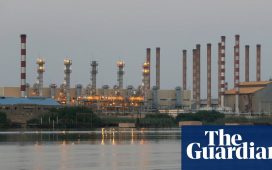 © Reuters. Bank of Korea Faces Competing Risks as Rate Cut Pressure Grows
© Reuters. Bank of Korea Faces Competing Risks as Rate Cut Pressure Grows(Bloomberg) — As global monetary policy shifts direction, the Bank of Korea faces rising risks to economic growth but remains wary of record household debt and potential property bubbles.
Economists surveyed by Bloomberg are split on whether the BOK will take action at its policy meeting Thursday — 60% see it standing pat. But there is a growing consensus that it will trim rates at least once by the end of the year.
The U.S.-China trade war and a downturn in the semiconductor sector have hammered Korean exports, which account for almost half of economic output, while sluggish hiring and consumer debt are weighing on spending. A flare-up of tensions with Japan is adding to the gloom.
South Korea’s gross domestic product is expected to have rebounded in the second quarter from the worst quarter-on-quarter contraction in a decade, but is still forecast to grow this year at the slowest pace since the global financial crisis. If U.S.-China trade talks are derailed indefinitely, all bets are off.
“This is an economy that may actually be in a recession right now,” said Robert Carnell, Singapore-based chief economist for Asia-Pacific at ING, said in a recent report.
With the Federal Reserve and European Central Bank both poised to cut rates, and some Asian central banks already in action, the BOK could trim rates without fueling disruptive capital outflows. It also doesn’t have to worry about containing inflation, which is far below its 2% target.
“South Korea has been hit the hardest by trade woes but the BOK has been dilly-dallying on a rate cut,” said Oh Suk-tae, an economist for SG Securities in Seoul, a unit of Societe Generale (PA:) SA. If it doesn’t cut this week, the BOK will at least make it clear that a move is on the way, Oh said.
It’s Complicated
Yet a cut isn’t as clear-cut as it might first appear. The BOK’s last move was to raise rates to 1.75%, partly to curb growth in household debt and home prices. While a reversal by the Fed and other central banks would reduce pressure on the BOK to continue normalizing policy, aggressive rate cuts still aren’t likely.
At the last policy meeting, about six weeks ago, Governor Lee Ju-yeol stressed the need to balance concerns over growth and financial stability. Some BOK watchers took Lee’s later comment on “appropriately” responding to economic changes as signaling a rate cut.
In any case, Lee said there isn’t a lot of room for more action — and current policy doesn’t restrict economic activity. Economists in a Bloomberg survey see at most just two cuts — totaling 50 basis points — by the end of 2020.
After all, trimming a benchmark rate that is only half a percentage point above the record low will do little to stoke growth in South Korea’s economy, particularly if the trade war continues to sink exports.
What’s needed are measures to boost productivity, relax regulations and improve infrastructure, said Moon Hwy-chang, a professor at Seoul National University.
Growth Outlook
Still, in the nearer term the economy is expected to keep growing. Growth will come in at 2.1% this year, according to a median projection of economists in a Bloomberg survey. That would be the worst since 2009 — and down from 2.7% last year.
The Finance Ministry remains more optimistic, though earlier this month it trimmed its 2019 growth forecast to 2.4%-2.5%.
The BOK will update its economic outlook at this week’s meeting.













